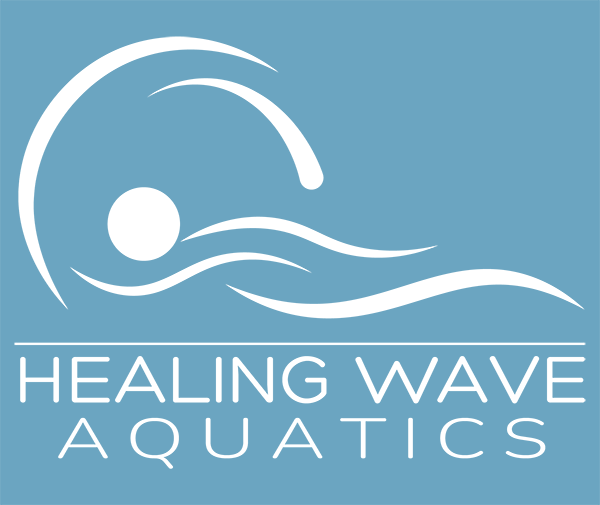Aquatic therapy is a specialized service of individualized bodywork therapy between a practitioner and a client in heated water in service of calming the nervous system. The therapy takes place in 96-degree warm water, which is similar to a bathtub and also the temperature of your skin. The 1:1 therapy session involves getting the body buoyant using floats and pillows, then the practitioner guides the client through a series of gentle movements (stretches, twists, joint mobilization) and massage intended to relax the body so the mind may also relax as well.
This is different from Aqua Physical Therapy, Hydrotherapy or Sensory Deprivation Tanks
While a session could seem similar to physical therapy in water, the increased temperature and the psycho-emotional connection between the client and their body make this a different and unique practice. A session could include a focus on connecting with the breath, feeling the supportive connection between the client and the practitioner, and allowing the combination of the warm water and movement to produce a calming state for the mind and body together. It can be sublimely relaxing, providing the receiver with potential relief from chronic pain, physical ailments, stressful circumstances, or emotional trauma.
Aquatic Therapist Training at Healing Wave Aquatics
Aquatic Therapists at Healing Wave Aquatics have all achieved a high level of practice with a minimum of 1,000 hours of training, including: 500 hours of specialized aquatic therapy training, 500 hours of massage therapy training, classes in trauma-informed care specifically for clients with PTS and suicidal ideation, as well as CPR/Life Support certification. At Healing Wave Aquatics, our aquatic therapists are screened for their knowledge and audited for their skills prior to working with clients to present a best practices program for individuals who are dealing with chronic trauma.
Arrival & Getting Started
As you arrive at Healing Wave Aquatics, you are welcome to relax in our lobby space while waiting for your session to begin. Your practitioner will arrive to escort you to the pool area to ensure you have everything you need and the space is set up for your arrival. We have two private shower rooms to rinse before going to one of our two 96-degree pools with secure lockers for your personal belongings.

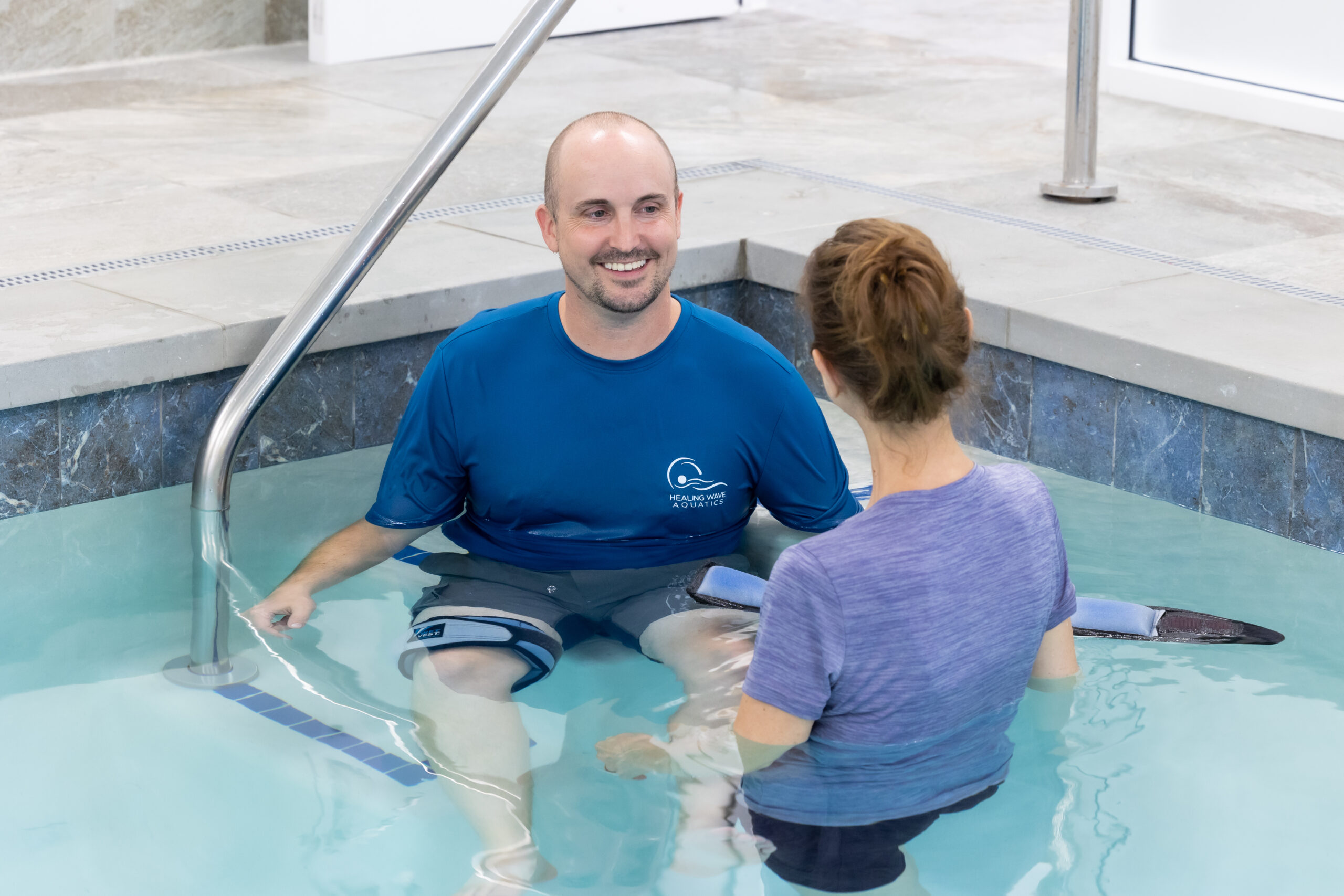
Greeting & Consultation
After joining your practitioner in the pool, they will check in with you about how your body is feeling, assess any areas of tension in your body or physical concerns, perhaps evaluating your energy / stress levels or how you’ve been sleeping recently in order to design that day’s session for your specific needs at the moment. We are always here to ensure that we operate within your boundaries and you feel heard and supported, so you can trust the process.
Applying Floats
The practitioner will either assess your general body composition (height, weight, musculature, etc) or perform a quick test float to assess your natural buoyancy (how much you float or sink unassisted) to determine how many floats are required for your limbs to ensure you feel weightless and your body can skim the surface of the water easily. The floats support the limbs, while the air in the lungs support the chest and the practitioner is responsible for the client’s head.


Settling & Grounding
A typical water session will often begin and end with an exercise in grounding the body. Initially, the intention is to introduce the client to the water: inviting them to feel the warmth of the pool, to begin to connect with their breath, their body, and begin to enter into the space of their own mind. By establishing a connection to the breath early on, it often easily continues with the receiver as they settle into the environment and the session unfolds.
Leaning Back - “Finding the Float”
Once the receiver has found a place for their mind, body, and breath to rest, they are invited to lean their body back to allow the floats, the air in their lungs, and the practitioner to assist in bringing the body to the surface of the water. From this point, the more the body can rest easily on the water, the easier it is to move the receiver around. Once the body has navigated learning to float, people often report that it can make them feel like they are flying or peacefully hovering in space. This is one of the most unique and special aspects of working in body temperature warm water.
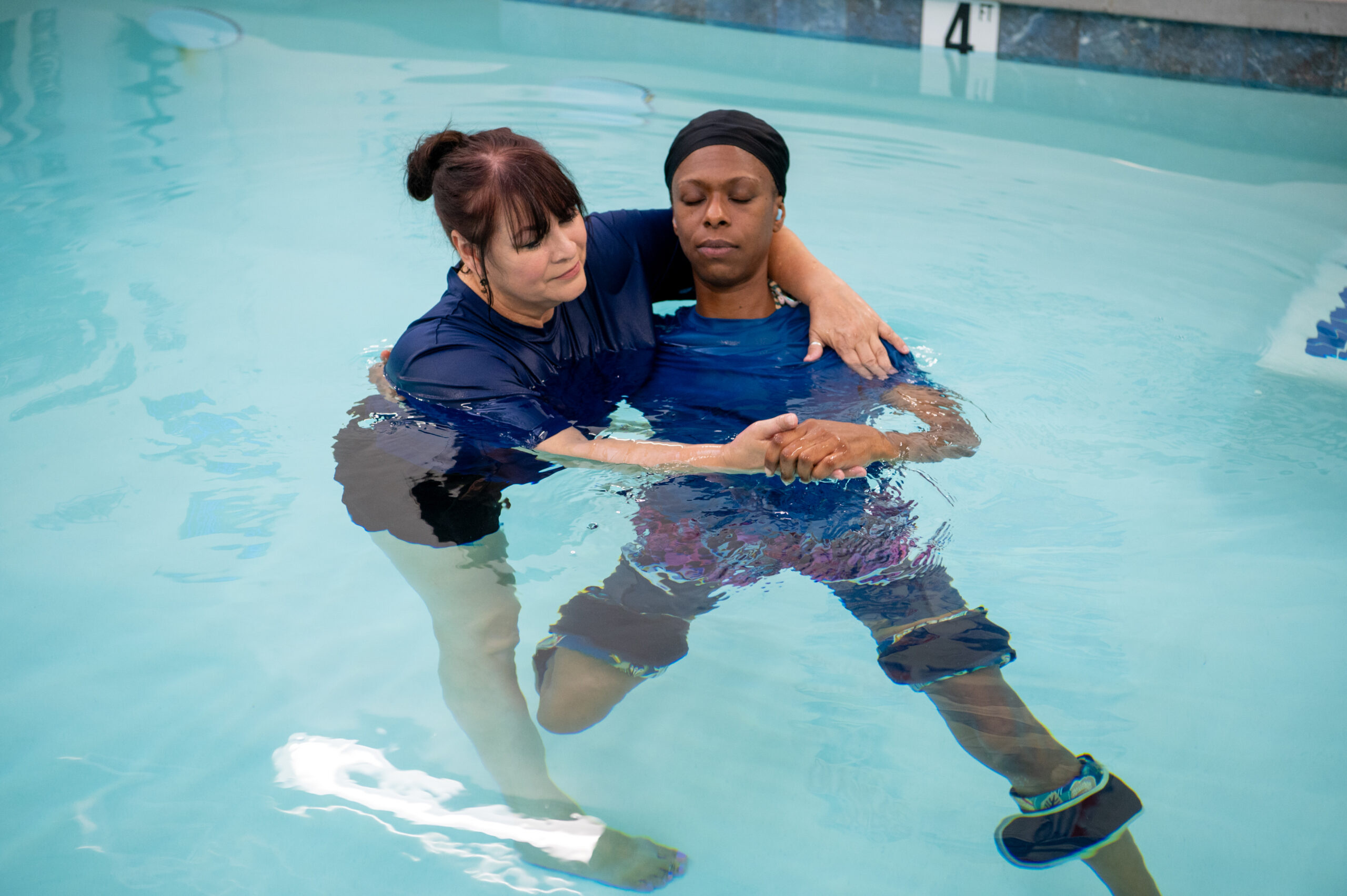
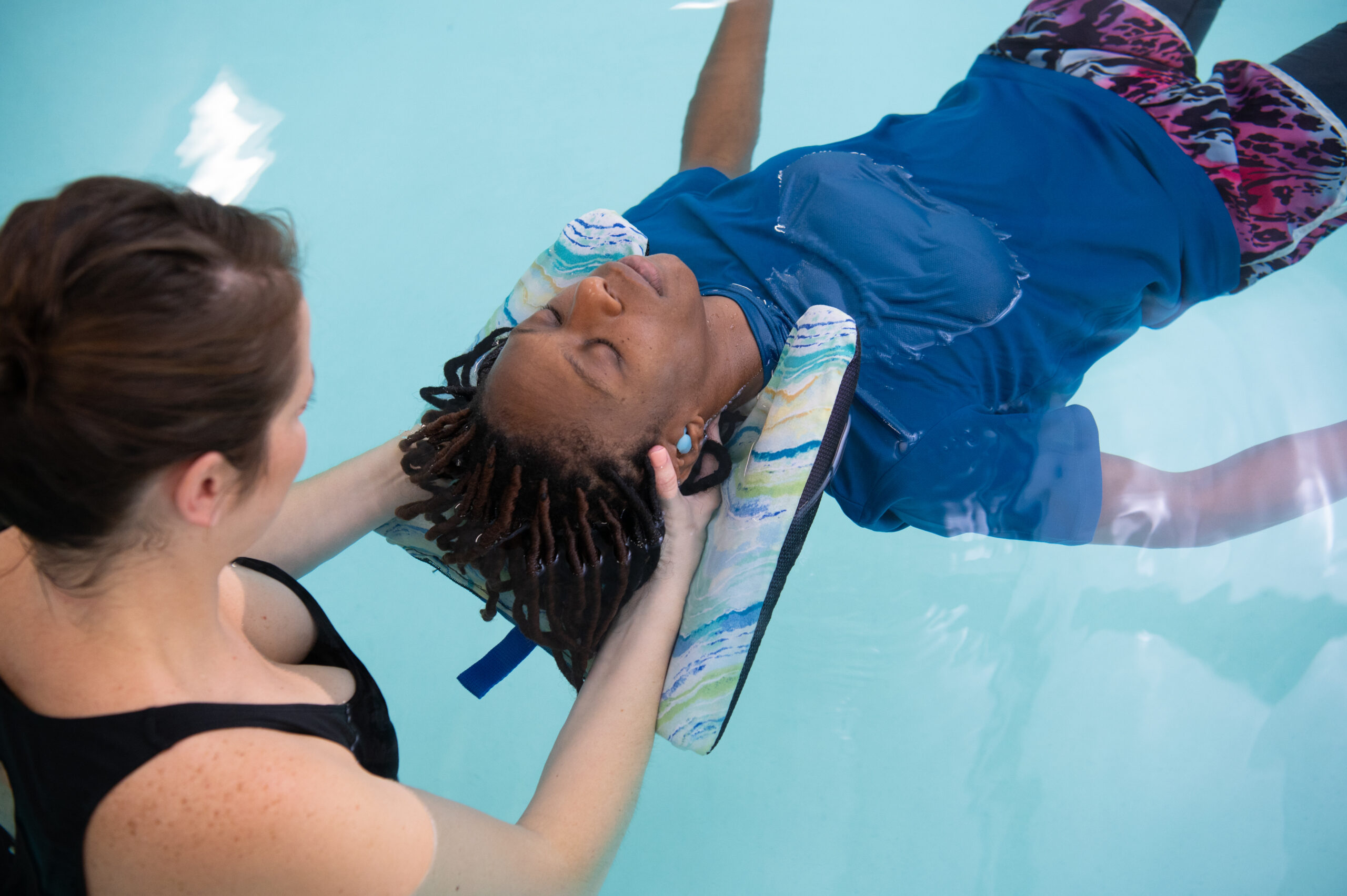
Settling in Stillness
Calm and meditative stillness are an important functional part of introducing the receiver to the environment and helping their subconscious settle into a trusting space during the work. This is the root from which the rest of the session stems from, and can be a refuge from the turbulence of movement. One of the greatest benefits of these moments is how they can alter your perception of time; slowing things down and deepening the receiver's connection with themselves and their breath.
Suspension
Playing with gravity is one of the most special aspects of working in water. Since the body is buoyant and assisted by floats, even the smallest of lifts can bring forth a sense of freedom and openness. Feeling the water curl around your limbs and envelop your body again after rising out of the water helps the client sink deeper into their connection with their body in the moment. Gravity and lifting can also be used to mobilize the joints, strengthen stretches, and stabilize the receiver’s equilibrium after moments of turbulence, or when nearing the end of a session to assist in the process of grounding.

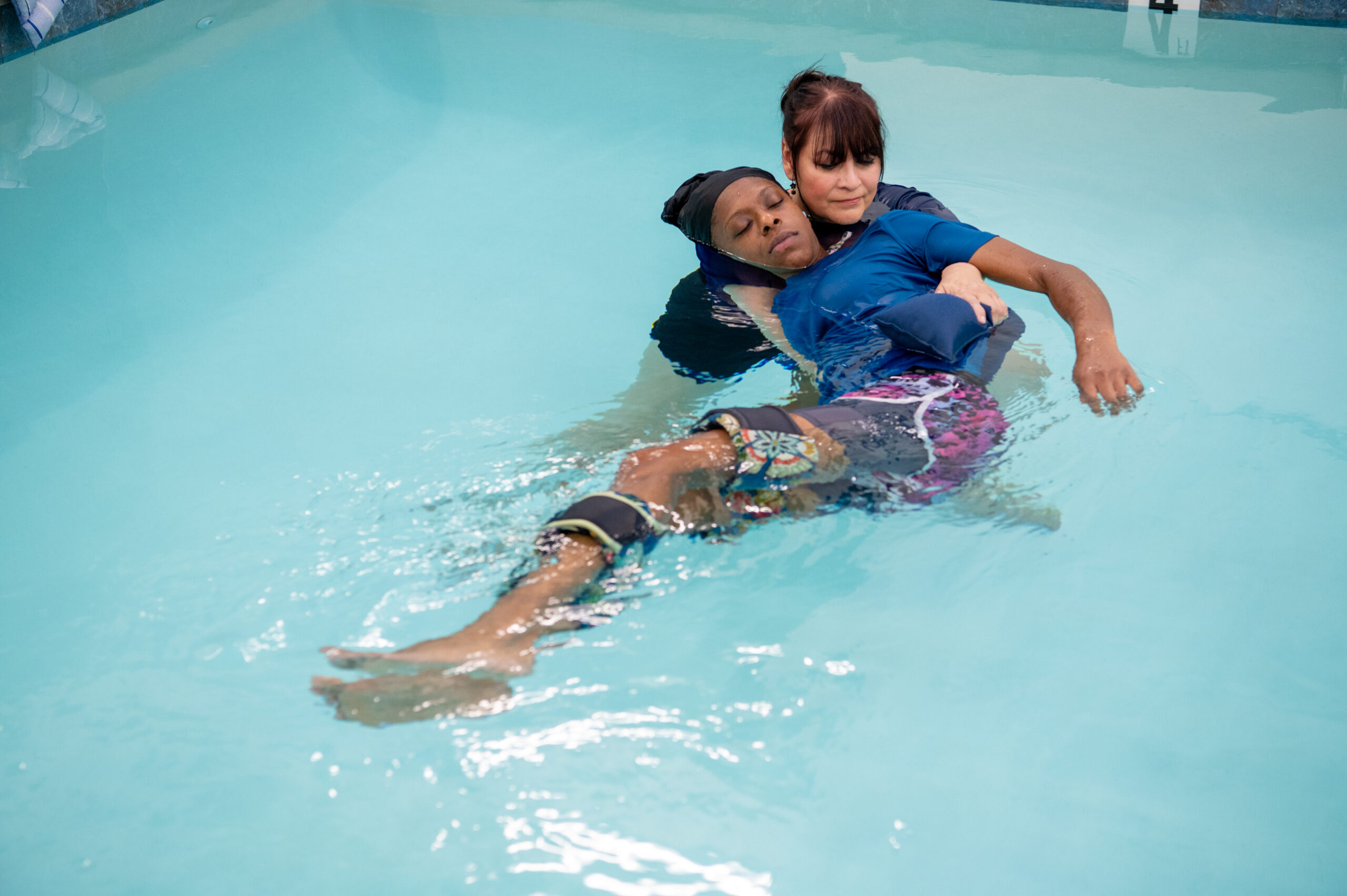
Swinging & Swaying
Swishing the body from side to side, and swaying back and forth is such a lovely and playfully simple way to show people the potential of the water. Moves that wave the body through space activate the entire spine and significantly impact the body’s natural relaxation response. Care is always taken by the practitioner to keep the pace slow and measured and within the client’s comfort zone.
Stretching
The warmth of the pool significantly facilitates ease of movement, and a further range of motion than most people expect of themselves. This work allows for some beautiful movements that can feel like passive yoga poses in the water. For those less inclined to move, it can be a great way to find the healthy limits of their range of motion, while the practitioner is always being cautious of any areas of injury and preventing potential discomfort.
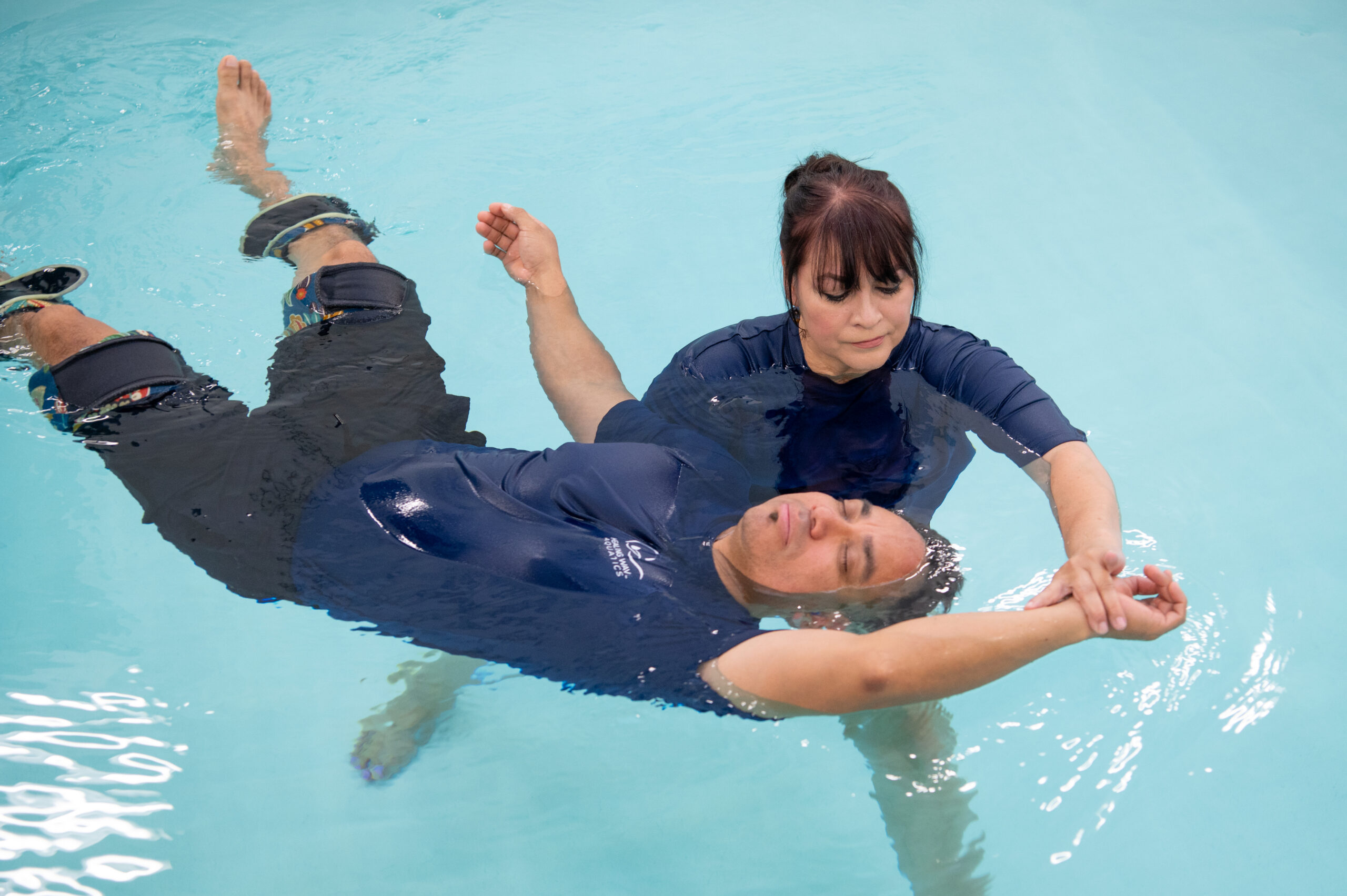

Expanding Outward
A myriad of the postures that are created during the flow of a session evokes a sense of openness and extension. This is fantastic for the shoulders, rib cage, and hips, and from an emotional and psychological perspective, some have reported feelings of freedom, power, flowering, and abundance.
Folding Inward
These movements provide the receiver with a calm moment and a safe space to integrate anything the movement may have stimulated. It invites the receiver into themselves and connects with their breath while feeling the weight of the water evenly supporting their body. This can be created by utilizing the wall of the pool, or the therapist’s hands or body embracing a section of the receiver’s body. These maneuvers foster safety, security, wholeness, and a sense that what once was fragmented is now unified.

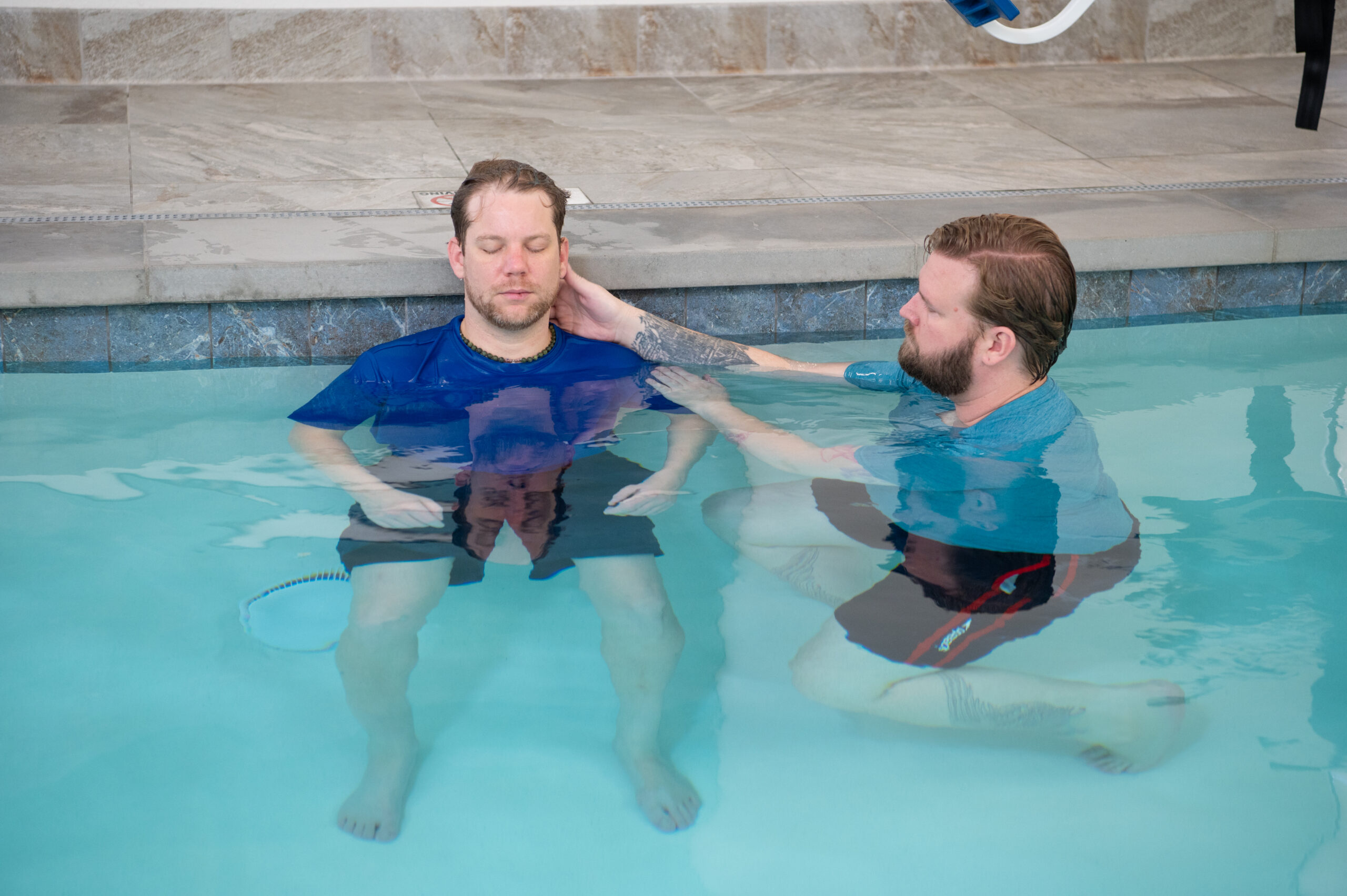
Docking & Completion
The session will come to a close with a docking ceremony on the wall of the pool. This process will allow the receiver’s mind and inner ear to adjust to being vertical again, and allow the receiver to begin to settle back into their body under the weight of gravity. Careful attention is taken to ensure the receiver’s body is in alignment and they can support themselves unassisted. Allowing the session to come to a graceful close ensures the relaxation will stay with the receiver for as long as possible after the session is complete. After they have finished a session, receivers often report an ease of being, and operating from a calm, open space in their mind, from which they can better operate in their daily life.


